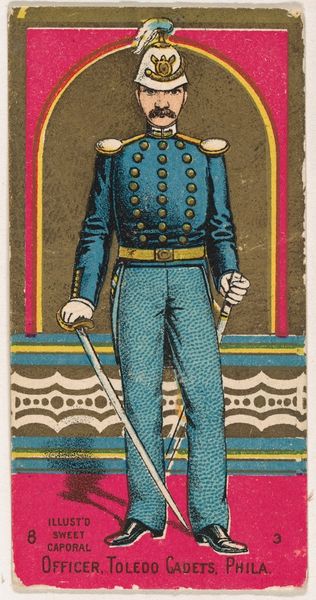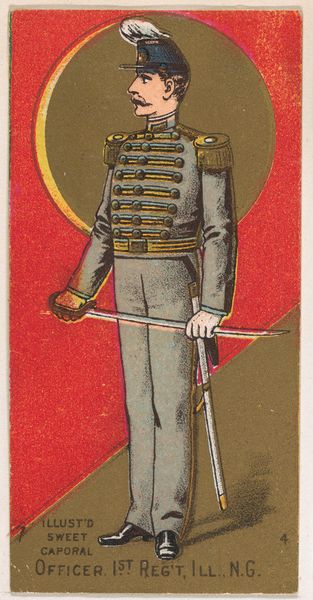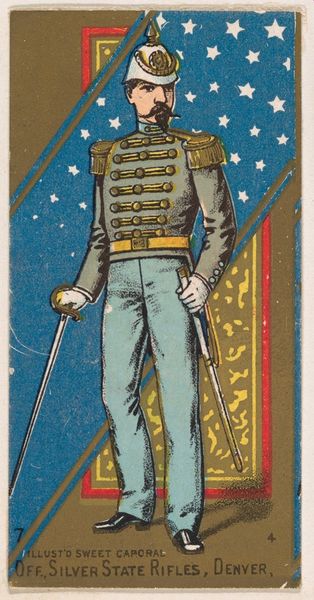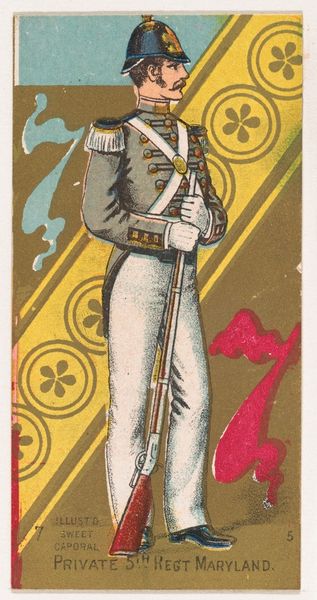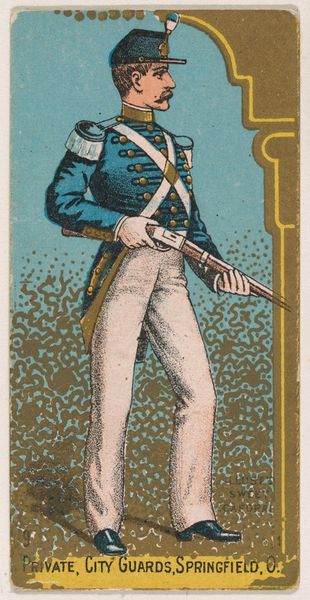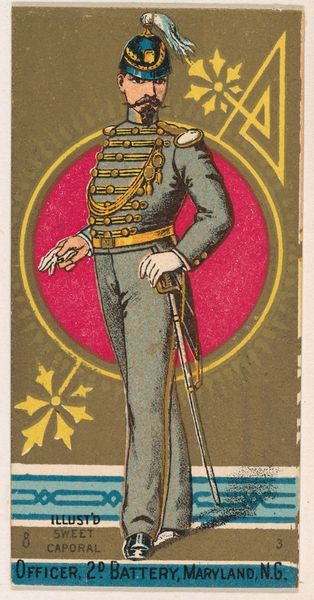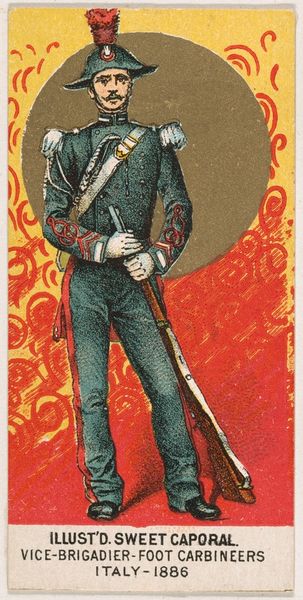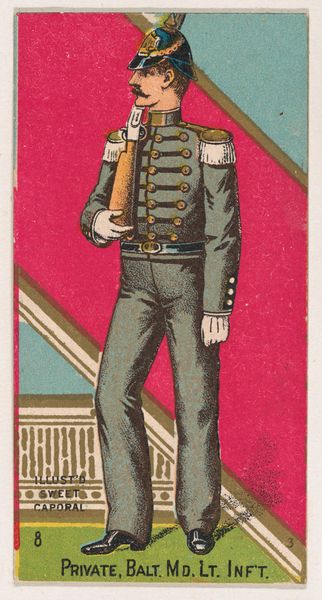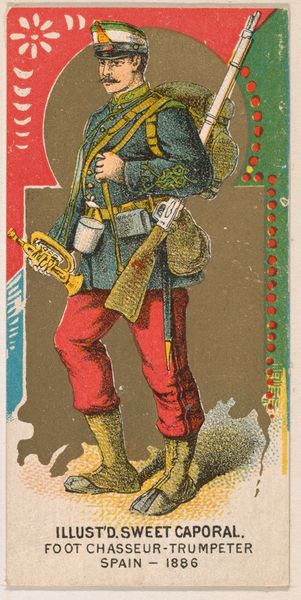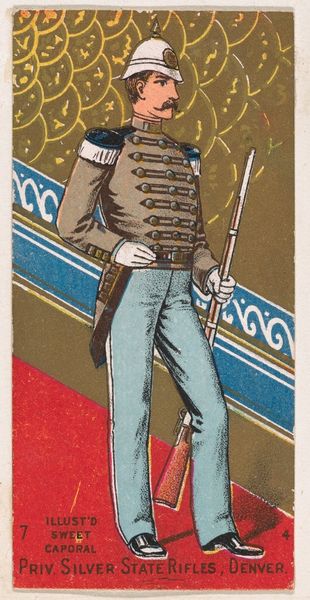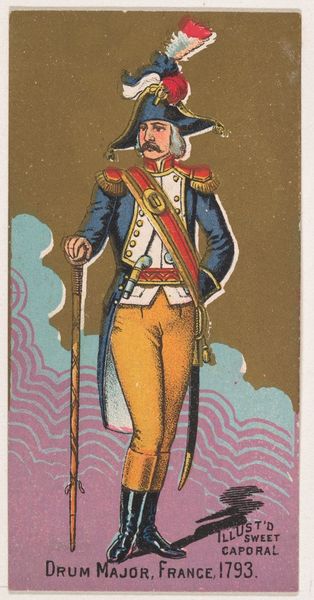
Officer, Ordinance, Spain, 1886, from the Military Series (N224) issued by Kinney Tobacco Company to promote Sweet Caporal Cigarettes 1888
0:00
0:00
drawing, print, etching
#
portrait
#
drawing
# print
#
etching
#
figuration
#
men
#
watercolour illustration
#
genre-painting
Dimensions: Sheet: 2 3/4 × 1 1/2 in. (7 × 3.8 cm)
Copyright: Public Domain
Editor: So, this is “Officer, Ordinance, Spain, 1886,” part of a Military Series from 1888, by Kinney Tobacco Company. It's a drawing and print, likely etching. It has the feel of a miniature portrait, like something mass-produced. What does this portrait say to you? Curator: This piece fascinates me precisely because it’s connected to consumption and the making of commodities. Consider the process. It's mass-produced etching used to promote cigarettes. We're not talking about high art, but a commercial product inextricably linked to both the tobacco industry and a specific image of militarism. How does the context of a cigarette card change our understanding of portraiture and its relationship to power? Editor: I never considered the power dynamics implicit in a cigarette card. It makes you wonder about the worker creating it and those consuming the cigarettes. Curator: Precisely. The labor involved in creating this image and the raw materials like paper and ink, plus the tobacco - it’s all connected. Who were the workers etching these images? What were their working conditions? And what about the consumers – did they see this image as aspirational, a sign of status? It begs us to look at the material conditions surrounding its production and reception. Editor: So, we are not only examining the portrait but everything it took to produce it, including the socio-economic factors? Curator: Exactly. The print becomes a lens through which we can examine labour, material, and power dynamics of the time. It pushes us beyond just aesthetic appreciation and toward a critical analysis of its material and historical context. Editor: I am thinking differently now, focusing less on the "art" and more on the system that allowed it to exist, and what purpose it served in that system. Curator: Wonderful. I'm glad to have opened a new perspective to see art from a different angle.
Comments
No comments
Be the first to comment and join the conversation on the ultimate creative platform.
